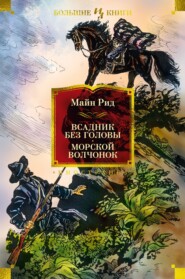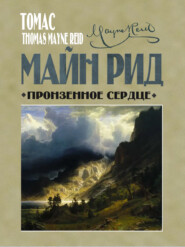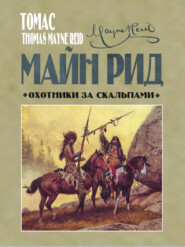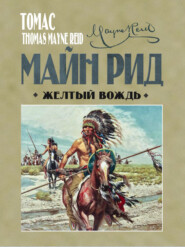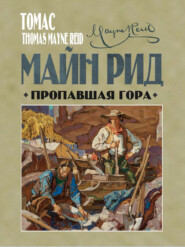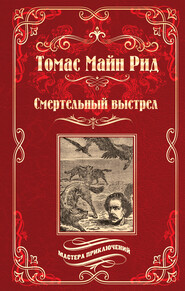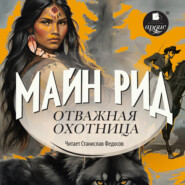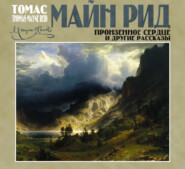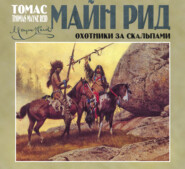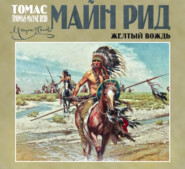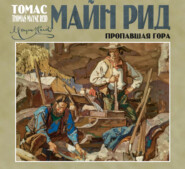По всем вопросам обращайтесь на: info@litportal.ru
(©) 2003-2024.
✖
Odd People: Being a Popular Description of Singular Races of Man
Настройки чтения
Размер шрифта
Высота строк
Поля
Such queer three-cornered dealings are also carried on in the northern countries of Spanish America, – in the provinces of Chihuahua, New Leon, and New Mexico. They are there called “cosas de Mexico.” It appears they are equally “cosas de Paraguay.”
Chapter Seven.
The Feegees, or Man-Eaters
Have I a reader who has not heard of the “King of the Cannibal Islands?” I think I may take it for granted that there is not one in my large circle of boy-readers who has not heard of that royal anthropophagist, that “mighty king” who, —
“In one hut,
Had fifty wives as black as sut,
And fifty of a double smut —
That King of the Cannibal Islands.”
And yet, strange as it may appear, the old song was no exaggeration – neither as regards the number of his wives, nor any other particular relating to King “Musty-fusty-shang.” On the contrary, it presents a picture of the life and habits of his polygamous majesty that is, alas! too ludicrously like the truth.
Though the king of the Cannibal Islands has been long known by reputation, people never had any very definite idea in what quarter of the world his majesty’s dominions lay. Being, as the name implies, an island-kingdom, it was to be looked for of course, in some part of the ocean; and the Pacific Ocean or Great South Sea was generally regarded as that in which it was situated; but whether it was the Tonga Islands, or the Marquesas, or the Loo-Choos, or the Soo-loos – or some other group, that was entitled to the distinction of being the man-eating community, with the man-eating king at their head – was not very distinctly ascertained up to a recent period. On this head there is uncertainty no longer. Though in several groups of South-Sea Islands the horrible propensity is known to exist, yet the man-eaters, par excellence, the real bona-fide followers of the habit, are the Feegees. Beyond doubt these are the greatest cannibals in all creation, their islands the true “Cannibal Islands,” and their king no other than “Musty-fusty-shang” himself.
Alas! the subject is too serious to jest upon, and it is not without pain that we employ our pen upon it. The truth must needs be told; and there is no reason why the world should not know how desperately wicked men may become under the influence of a despotism that leaves the masses in the power of the irresponsible few, with no law, either moral or physical, to restrain their unbridled passions.
You will find the Feegee Islands, in the Pacific Ocean, in the latitude of 18 degrees south. This parallel passes nearly through the centre of the group. Their longitude is remarkable: it is the complement of the meridian of Greenwich – the line 180 degrees. Therefore, when it is noon in London, it is midnight among the Feegees. Take the intersection of these two lines, 18 degrees latitude and 180 degrees longitude as a centre; describe an imaginary circle, with a diameter of 300 miles; its circumference, with the slight exception of a small outlying group, will enclose, in a “ring fence,” as it were, the whole Feegee archipelago.
The group numbers, in all, no fewer than 225 islands and islets, of which between 80 and 90 are at present inhabited – the whole population being not much under 200,000. The estimates of writers differ widely on this point; some state 150,000 – others, more than double this amount. There is reason to believe that 150,000 is too low. Say, then, 200,000; since the old adage: “In medias res,” is generally true.
Only two of the islands are large, – “Viti,” and “Vanua.” Viti is 90 miles long, by 50 in breadth, and Vanua 100 by 25. Some are what are known as “coral islands;” others are “volcanic,” presenting all varieties of mountain aspect, rugged and sublime. A few of the mountain-peaks attain the elevation of 5,000 feet above sea-level, and every form is known – table-topped, dome-shaped, needle, and conical. In fact, no group in the Pacific affords so many varieties of form and aspect, as are to be observed in the Feegee archipelago. In sailing through these islands, the most lovely landscapes open out before the eye, the most picturesque groupings of rocks, ridges, and mountain-peaks, ravines filled with luxuriant vegetation, valleys covered with soft verdure, so divinely fair as to appear the abode of angelic beings. “So beautiful was their aspect,” writes one who visited them, “that I could scarcely bring my mind to the realising sense of the well-known fact, that they were the abode of a savage, ferocious, and treacherous race of cannibals.” Such, alas! is the fact, well-known, as the writer observes.
Perhaps to no part of the world has Nature been more bountiful than to the Feegee Islands. She has here poured out her favours in very profusion; and the cornucopia might be regarded as an emblem of the land. The richest products of a tropic vegetation flourish in an abundance elsewhere unknown, and the growth of valuable articles of food is almost spontaneous. Many kinds are really of spontaneous production; and those under cultivation are almost endless in numbers and variety. Yams grow to the length of six feet, weighing one hundred pounds each! and several varieties are cultivated. The sweet potato reaches the weight of five or six pounds, and the “taro” (Arum esculentum) also produces a root of enormous size, which forms the staple article of the Feegeean’s food. Still another great tuber, weighing twenty or thirty pounds, and used as a liquorice, is the produce of the “massawe,” or ti-tree (dracaena terminalis); and the root of the piper methisticum often attains the weight of one hundred and forty pounds! This last is possessed of highly narcotic properties; and is the material universally used in the distillation, or rather brewing, of the native drink called “yaqona” – the “kava” of the South-Sea voyagers. Breadfruit grows in abundance: there being no less than nine varieties of this celebrated tree upon the different islands of the group, each producing a distinct kind of fruit; and what is equally remarkable, of the musaceae– the plantain and banana – there are in the Feegee isles thirty different kinds, either of spontaneous growth, or cultivated! All these are well distinguished from one another, and bear distinct appellations. Three kinds of cocoa-palm add to the extraordinary variety of vegetable food, as well as to the picturesqueness of the scenery; but there is no lack of lovely forms in the vegetation, where the beautiful ti-tree grows, – where the fern and the screw-pines flourish, – where plantains and bananas unfold their broad bright leaves to the sun; where arums spread their huge fronds mingling with the thick succulent blades of the bromelia, and where pawpaws, shaddocks, orange and lime-trees exhibit every hue of foliage, from deep-green to the most brilliant golden.
Fruits of a hundred species are grown in the greatest plenty; the orange and the Papuan apple, the shaddock and lemon; in short, almost every species of fruit that will flourish in a tropical clime. In addition, many indigenous and valuable kinds, both of roots and fruits, are peculiar to the Feegee group, yet unknown and uncultivated in any other part of the world. Even the very cloth of the country – and a beautiful fabric it makes – is the product of an indigenous tree, the “malo” or paper-mulberry (Brousonetia papyrifera), the “tapa” of voyagers. Not only the material for dresses, but the tapestry for the adornment of their temples, the curtains and hangings of their houses, are all obtained from this valuable tree.
We have not space for a more detailed account of the productions of these isles. It would fill a volume to describe with any degree of minuteness the various genera and species of its plants alone. Enough has been said to show how bountiful, or rather how prodigal, nature has been to the islands of the Feegeean Archipelago.
Of the animal kingdom there is not much to be said. Of quadrupeds there is the usual paucity of species that is noticed everywhere throughout the Polynesian islands. Dogs and pigs are kept; the latter in considerable numbers, as the flesh forms an important article of food; but they are not indigenous to the Feegee group, though the period of their introduction is unknown. Two or three small rodents are the only quadrupeds yet known to be true natives of the soil. Reptiles are alike scarce in species, – though the turtle is common upon the coasts, and its fishery forms the regular occupation of a particular class of the inhabitants. The species of birds are more numerous, and there are parrots, peculiar to the islands, of rich and beautiful plumage.
But we are not allowed to dwell upon these subjects. Interesting as may be the zoology and botany of the Feegeean Archipelago, both sink into insignificance when brought into comparison with its ethnology, – the natural history of its human inhabitants; – a subject of deep, but alas! of a terribly painful interest. By inquiry into the condition and character of these people, we shall see how little they have deserved the favours which nature has so bounteously bestowed upon them.
In the portrait of the Feegeean you will expect something frightfully hideous, – knowing, as you already do, that he is an eater of human flesh, – a man of gigantic stature, swarthy skin, bloodshot eyes, gaunt, bony jaws, and terrific aspect. You will expect this man to be described as being naked, – or only with the skin of a wild beast upon his shoulders, – building no house, manufacturing no household or other utensils, and armed with a huge knotted club, which he is ever ready to use: – a man who dwells in a cavern, sleeps indifferently in the open air or under the shelter of a bush; in short, a true savage. That is the sort of creature you expect me to describe, and I confess that just such a physical aspect – just such a condition of personal hideousness – would be exactly in keeping with the moral deformity of the Feegeean. You would furthermore expect this savage to be almost devoid of intellectual power, – altogether wanting in moral sense, – without knowledge of right and wrong, – without knowledge of any kind, – without ideas. It seems but natural you should look for such characteristics in a cannibal.
The portrait I am about to paint will disappoint you. I do not regret it, since it enables me to bring forward another testimony that man in his original nature is not a being of such desperate wickedness. That simple and primitive state, which men glibly call savage, is not the condition favourable to cannibalism. I know that it is to such people that the habit is usually ascribed, but quite erroneously. The Andaman islander has been blamed with it simply becauses he chances to go naked, and looks, as he is, hungry and emaciated. The charge is proved false. The Bushman of South Africa has enjoyed a similar reputation. It also turns out to be a libel. The Carib long lived under the imputation, simply because he presented a fierce front to the Spanish tyrant, who would have enslaved him; and we have heard the same stigma cast upon a dozen other tribes, the lowest savages being usually selected; in other words, those whose condition appeared the most wretched. In such cases the accusation has ever been found, upon investigation, to be erroneous.
In the most primitive state in which man appears upon the earth, he is either without social organisation altogether, or if any do exist, it is either patriarchal of republican. Neither of these conditions is favourable to the development of vice, – much less the most horrible of all vices.
It will not do to quote the character of the Bushman, or certain other of the low tribes, to refute this statement. These are not men in their primitive state ascending upward, but a condition altogether the reverse. They are the decaying remnants of some corrupt civilisation, sinking back into the dust out of which they were created.
No – and I am happy to say it – man, as he originally came from the hands of the Creator, has no such horrid propensity as cannibalism. In his primitive state he has never been known to practise it, – except when the motives have been such as have equally tempted men professing the highest civilisation, – but this cannot be considered cannibalism. Where that exists in its true unmitigated form, – and unhappily it does so, – the early stages of social organisation must have been passed; the republican and patriarchal forms must both have given place to the absolute and monarchical. This condition of things is absolutely necessary, before man can obtain sufficient power to prey upon his fellow-man to the extent of eating him. There can be no “cannibal” without a “king.”
So far from the Feegeean cannibals being savages, according to the ordinary acceptation of the term, they are in reality the very reverse. If we adhere to the usual meaning of the word civilisation, understanding by it a people possessing an intelligent knowledge of arts, living in well-built houses, fabricating fine goods, tilling their lands in a scientific and successful manner, practising the little politenesses and accomplishments of social life, – if these be the criteria of civilisation, then it is no more than the truth to say that the standard possessed by the Feegee islanders is incomparably above that of the lower orders of most European nations.
It is startling to reflect – startling as sad – that a people possessed of such intellectual power, and who have ever exercised it to a wonderful extent, in arts, manufactures, and even in the accomplishing of their own persons, should at the same time exhibit moral traits of such an opposite character. An atrocious cruelty, – an instinct for oppression, brutal and ferocious, – a heart pitiless as that of the fiend himself, – a hand ever ready to strike the murderous blow, even though the victim be a brother, – lips that lie in every word they speak, – a tongue ever bent on barbaric boasting, – a bosom that beats only with sentiments of treachery and abject cowardice, – these are the revolting characteristics of the Feegeean. Dark as is his skin, his soul is many shades darker.
It is time, however, to descend to a more particular delineation of this man-eating monster; and first, we shall give a description of his personal appearance.
The Feegeeans are above the average height of Europeans or white men: men of six feet are common among them, though few reach the height of six feet six. Corpulent persons are not common, though large and muscular men abound. Their figure corresponds more nearly to that of the white man than any other race known. The proportions of their limbs resemble those of northern Europeans, though some are narrower across the loins. Their chests are broad and sinewy, and their stout limbs and short, well-set necks are conspicuous characters. The outline of the face is a good oval; the mouth large, with white teeth regularly arranged – ah! those horrid teeth! – the nose is well-shaped, with full nostrils; yet quite distinct, as are the lips also, from the type of the African negro. Indeed, with the exception of their colour, they bear very little resemblance to the negro, – that is, the thick-lipped, flat-nosed negro of our fancy; for there are negro tribes in Africa whose features are as fine as those of the Feegeeans, or even as our own. In colour of skin the Feegeean is nearly, if not quite, as dark as the negro; but it may be remarked that there are different shades, as there are also among pure Ethiopians. In the Feegee group there are many men of mulatto colour, but these are not of the original Feegee stock. They are either a mixed offspring with the Tonga islander, or pure-bred Tonga islanders themselves who for the past two hundred years have been insinuating themselves into the social compact of the Feegeeans. These light-coloured people are mostly found on the eastern or windward side of the Feegee group, – that is, the side towards Tonga itself, – and the trade-winds will account for their immigration, which was at first purely accidental. They at present play a conspicuous part in the affairs of the Feegeeans, being in favour with the kings and great chiefs, partly on account of their being better sailors than the native Feegeeans, and partly on account of other services which these tyrants require them to perform. In some arts the Tongans are superior to the Feegeeans, but not in all. In pottery, wood-carving, making of mats or baskets, and the manufacture of the tapa cloth, the Feegeeans stand unrivalled over all the Pacific Ocean.
We need say no more of the Tongans here; they are elsewhere described. Those dwelling in Feegee are not all fixed there for life. Some are so, and these are called Tonga-Feegeeans; the others are only visitors, giving their services temporarily to the Feegeean chiefs, or occupied in ship-building, – in constructing those great war canoes that have been the astonishment of South-Sea voyagers, and which Feegee sends forth from her dockyards in the greatest perfection. These, when finished by the Tongan strangers, are used to carry them back to their own islands, that lie about three hundred miles to the windward (southeast).
But to continue the portrait of the Feegeean. We have touched almost every part of it except the hair; but this requires a most elaborate limning, such as the owner himself gives it. In its natural state the head of the Feegeean is covered by a mass of black hair, long, frizzled, and bushy, sometimes encroaching on the forehead, and joined by whiskers to a thick, round, or pointed beard, to which moustaches are often added. Black is, of course, the natural colour of the hair, but it is not always worn of this hue. Other colours are thought more becoming; and the hair, both of the men and women, is dyed in a variety of ways, lime burning it to a reddish or whitey-brown shade. A turmeric-yellow, or even a vermilion-red are not uncommon colours; but all these keep varying, according to the change of fashions at court!
Commodore Wilkes, who has given a good deal of his time to an exploration of the Feegee Islands, states that the Feegee hair, in its natural condition, is straight, and not “frizzled,” as described above – he says that the frizzling is the work of the barber; but the Commodore is altogether mistaken in this idea. Thousands of Feegeeans, whose hair was never touched by a barber, nor dressed even by themselves, exhibit this peculiarity. We regret to add that this is only one of a thousand erroneous statements which the Commodore has made during his gigantic exploration. He may have been excellent at his own speciality of making soundings and laying down charts; but on all matters pertaining to natural history or ethnology, the worthy Commodore appears to have been purblind, and, indeed, his extensive staff of naturalists of every kind have produced far less than might have been expected from such excellent opportunities as they enjoyed. The observation of the Commodore will not stand the test of time, and cannot be depended upon as safe guides, excepting in those cases where he was an actual eye-witness. About his truthful intentions there can be no doubt whatever.
Of one very peculiar performance among the Feegees he appears to have had actual demonstration, and as he has described this with sufficient minuteness, we shall copy his account; though, after what we have said, we should apologise largely for the liberty. The performance referred to is that of “barberising” a barbarian monarch, and may be taken as a proof of high civilisation among the Feegees. It will be seen that, with the exception of the tabooed fingers, there is not much difference between a barber of Bond Street and an artist of like calling in the Cannibal Islands.
“The chiefs in particular,” writes Commodore Wilkes, “pay great attention to the dressing of their heads, and for this purpose all of them have barbers, whose sole occupation is the care of their masters’ heads. These barbers are called a-vu-ni-ulu. They are attached to the household of the chiefs in numbers of from two to a dozen. The duty is held to be of so sacred a nature, that their hands are tabooed from all other employment, and they are not even permitted to feed themselves. To dress the head of a chief requires several hours. The hair is made to spread out from the head, on every side, to a distance that is often eight inches. The beard, which is also carefully nursed, often reaches the breast, and when a Feegeean has these important parts of his person well dressed, he exhibits a degree of conceit that is not a little amusing.
“In the process of dressing the hair it is well anointed with oil, mixed with a carbonaceous black, until it is completely saturated. The barber then takes the hairpin, which is a long and slender rod, made of tortoise-shell or bone, and proceeds to twitch almost every separate hair. This causes it to frizzle and stand erect. The bush of hair is then trimmed smooth by singeing it, until it has the appearance of an immense wig. When this has been finished, a piece of tapa, so fine as to resemble tissue-paper, is wound in light folds around it, to protect the hair from the dew or dust. This covering, which has the look of a turban, is called sala, and none but the chiefs are allowed to wear it; any attempt to assume this head-dress by a kai-si, or common person, would be immediately punished with death. The sala, when taken proper care of, will last three weeks or a month, and the hair is not dressed except when it is removed; but the high chiefs and dandies seldom allow a day to pass without changing the sala and having the hair put in order.”
With this account, we conclude our description of the Feegeean’s person. His costume is of the simplest kind, and easily described. With the men it is merely a strip of “tapa” or “malo” cloth passed several times round the waist, and the ends left to hang down in front. The length of the hanging ends determines the rank of the wearer, and only in the case of kings or great chiefs are they allowed to touch the ground. A turban of the finest tapa cloth among the great mop of hair is another badge of rank, worn only by kings and chiefs; and this head-dress, which adds greatly to the dignified appearance of the wearer, is not always coiffed in the same fashion, but each chief adapts it to his own or the prevailing taste of the court. The dress of the women is a mere waist-belt, with a fringe from six to ten inches in length. It is worn longer after they have become wives, sometimes reaching near the knee, and forming a very picturesque garment. It is called the “liku,” and many of them are manufactured with surprising skill and neatness, the material being obtained from various climbing plants of the forest. Under the “liku” the women are tattooed, and there only. Their men, on the contrary, do not undergo the tattoo; but on grand occasions paint their faces and bodies in the most fanciful colours and patterns.
The kings and some chiefs suspend from their necks shell ornaments – often as large as a dining-plate – that down upon the breast. Some, instead of this, wear a necklace of whales’ teeth, carved to resemble claws, and bearing a very close resemblance to the necklaces of the Prairie Indians, made of the claws of the grizzly bear. Another kind of necklace – perhaps more appropriate to the Feegee – is a string of human teeth; and this kind is not unfrequently worn by these ferocious dandies.
It must not be supposed that the scantiness of the Feegeean costume arises from poverty or stinginess on the part of the wearer. Nothing of the kind. It is simply because such is the fashion of the time. Were it otherwise, he could easily supply the materials, but he does not wish it otherwise. His climate is an eternal summer, and he has no need to encumber his body with extraneous clothing. With the exception of the turban upon his head, his king is as naked as himself.
You may suppose that the Feegeeans have but little notions of modesty; but, strange as it may appear, this is in reality not one of their failings. They regard the “malo” and “liku” as the most modest of garments; and a man or woman seen in the streets without these scanty coverings would be in danger of being clubbed to death!
It must be acknowledged that they are not altogether depraved – for in this respect they present the most astounding anomaly. Certain virtues are ascribed to them, and as I have painted only the dark side of their character, it is but fair to give the other. Indeed, it is a pleasure to do this – though there is not enough of the favourable to make any great alteration in the picture. The whole character is so well described by one of the most acute observers who has yet visited the South Seas – the Wesleyan missionary Williams – that we borrow the description.
“The aspect of the Feegeean,” says Mr Williams, “with reference to his mental character, so far from supporting the decision which would thrust him almost out of mankind, presents many points of great interest, showing that, if an ordinary amount of attention were bestowed on him, he would take no mean rank in the human family, to which, hitherto, he has been a disgrace. Dull, barren stupidity forms no part of his character. His feelings are acute, but not lasting; his emotions easily roused, but transient; he can love truly, and hate deeply; he can sympathise with thorough sincerity, and feign with consummate skill; his fidelity and loyalty are strong and enduring, while his revenge never dies, but waits to avail itself of circumstances, or of the blackest treachery, to accomplish its purpose. His senses are keen, and so well employed, that he often excels the white man in ordinary things. Tact has been called ‘ready cash,’ and of this the native of Feegee has a full share, enabling him to surmount at once many difficulties, and accomplish many tasks, that would have ‘fixed’ an Englishman. Tools, cord, or packing materials, he finds directly, where the white man would be at a loss for either; and nature seems to him but a general store for his use, where the article he wants is always within reach.
“In social diplomacy the Feegeean is very cautious and clever. That he ever paid a visit merely en passant, is hard to be believed. If no request leaves his lips, he has brought the desire, and only waits for a good chance to present it now, or prepare the way for its favourable reception at some other time. His face and voice are all pleasantness; and he has the rare skill of finding out just the subject on which you most like to talk, or sees at once whether you desire silence. Barely will he fail to read your countenance; and the case must be urgent indeed which obliges him to ask a favour when he sees a frown. The more important he feels his business the more earnestly he protests that he has none at all; and the subject uppermost in his thoughts comes last to his lips, or is not even named; for he will make a second, or even a third visit, rather than risk a failure through precipitancy. He seems to read other men by intuition, especially where selfishness or lust are prominent traits. If it serves his purpose, he will study difficult and peculiar characters, reserving the results for future use; if afterwards he wish to please them, he will know how, and if to annoy them, it will be done most exactly.
“His sense of hearing is acute, and by a stroke of his nail he judges the ripeness of fruits, or soundness of various substances.”
From what source the Feegeean has sprung is purely a matter of conjecture. He has no history, – not even a tradition of when his ancestors first peopled the Archipelago in which we now find him. Of his race we have not a much clearer knowledge. Speculation places him in the same family as the “Papuan Negro,” and he has some points of resemblance to this race, in the colour and frizzled hair; but there is as much difference between the wretched native of West Australia and the finely-developed Feegeean as there is between the stunted Laplander and the stalwart Norwegian; nor is the coarse rough skin of the true Papuan to be recognised in the smooth, glossy epidermis of the Feegee Islander. This, however, may be the result of better living; and certainly among the mountain-tribes of the Feegees, who lead lives of greater privation and hardship, the approach to the Papuan appearance is observable. It is hardly necessary to add that the Feegeean is of a race quite distinct from that known as the Polynesian or South-Sea Islander. This last is different not only in form, complexion, and language, but also in many important mental characteristics. It is to this race the Tongans belong, and its peculiarities will be sketched in treating of that people.
Were we to enter upon a minute description of the manners and customs of the Feegees, – of their mode of house and canoe building, – of their arts and manufactures, for they possess both, – of their implements of agriculture and domestic use, – of their weapons of war, – their ceremonies of religion and court etiquette, – our task would require more space than is here allotted to us: it would in fact be as much as to describe the complete social economy of a civilised nation; and a whole volume would scarce suffice to contain such a description. In a sketch like the present, the account of these people requires to be given in the most condensed and synoptical form, and only those points can be touched upon that may appear of the greatest interest.
It must be remembered that the civilisation of the Feegees – of course, I allude to their proficiency in the industrial arts – is entirely an indigenous growth. They have borrowed ideas from the Tongans, – as the Tongans have also from them, – but both are native productions of the South Sea, and not derived from any of the so-called great centres of civilisation. Such as have sprung from these sources are of modern date, and make but a small feature in the panorama of Feegeean life. The houses they build are substantial, and suitable to their necessities. We cannot stay to note the architecture minutely. The private dwellings are usually about twenty-five feet long by fifteen in breadth, the interior forming one room, but with a sort of elevated divan at the end, sometimes screened with beautiful “tapa” curtains, and serving as the dormitory.
The ground-plan of the house is that of an oblong square, – or, to speak more properly, a parallelogram. The walls are constructed of timber, – being straight posts of cocoa-palm, tree-fern, bamboo, or breadfruit, – the spaces between closely warped or otherwise filled in with reeds of cane or calamus. The thatch is of the leaves of the wild or cultivated sugar-cane, – sometimes of a pandanus, – thickly laid on, especially near the eaves, where it is carefully cropped, exposing an edge of from one to two feet in thickness. The roof has four faces, – that is, it is a “hip roof.” It is made with a very steep pitch, and comes down low, projecting fer over the heads of the upright timbers. This gives a sort of shaded veranda all around the house, and throws the rain quite clear of the walls. The ridge-pole is a peculiar feature; it is fastened to the ridge of the thatch by strong twisted ropes, that give it an ornamental appearance; and its carved ends project at both gables, or rather, over the “hip roofs,” to the length of a foot, or more; it is further ornamented by white shells, those of the cyprea ovula being most used for the purpose. The Feegee house presents altogether a picturesque and not inelegant appearance. The worst feature is the low door. There are usually two of them, neither in each house being over three feet in height. The Feegee assigns no reason why his door is made so low; but as he is frequently in expectation of a visitor, with a murderous bludgeon in his grasp, it is possible this may have something to do with his making the entrance so difficult.
The houses of the chiefs, and the great council-house, or temple, – called the “Bure,” – are built precisely in the same style; only that both are larger, and the doors, walls, and ridge-poles more elaborately ornamented. The fashionable style of decoration is a plaiting of cocoa-fibre, or “sinnet,” which is worked and woven around the posts in regular figures of “relievo.”
The house described is not universal throughout all the group. There are many “orders” of architecture, and that prevailing in the Windward Islands is different from the style of the Leeward, and altogether of a better kind. Different districts have different forms. In one you may see a village looking like an assemblage of wicker baskets, while in another you might fancy it a collection of rustic arbours. A third seems a collection oblong hayricks, with holes in their sides; while, in a fourth these ricks are conical.
It will be seen that, with this variety in housebuilding, it would be a tedious task to illustrate the complete architecture of Feegeeans. Even Master Kuskin himself would surrender it up in despair.
Equally tedious would it be to describe the various implements or utensils which a Feegee house contains. The furniture is simple enough. There are neither chairs, tables, nor bedsteads. The bed is a beautiful mat spread on the däis, or divan; and in the houses of the rich the floors are covered with a similar carpet. These mats are of the finest texture, far superior to those made elsewhere. The materials used are the Hibiscus tiliaceus, Pandanus odoratissimus, and a species of rush. They are in great abundance in every house, – even the poorest person having his mat to sit or lie upon; and it is they that serve for the broad-spreading sails of the gigantic canoes. In addition to the mats, plenty of tapa cloth may be seen, and baskets of every shape and size, – the wicker being obtained from the rattan (flagellaria), and other sources. One piece of furniture deserves especial mention, – this is the pillow upon which the Feegee lord lays his head when he goes to sleep. It presents but little claim to the appellation of a downy pillow; since it is a mere cylinder of hard polished wood, with short arched pedestals to it, to keep it firmly in its place. Its object is to keep the great frizzled mop from being tossed or disarranged, during the hours of repose; and Feegeean vanity enables the owner of the mop to endure this flinty bolster with the most uncomplaining equanimity. If he were possessed of the slightest spark of conscience, even this would be soft, compared with any pillow upon which he might rest his guilty head.
In addition to the baskets, other vessels meet the eye. These are of pottery, as varied in shape and size as they are in kind. There are pots and pans, bowls, dishes, cups and saucers, jars and bottles, – many of them of rare and curious designs, – some red, some ornamented with a glaze obtained from the gum of the kauri pine, – for this tree is also an indigenous production of the Feegee Islands. Though no potter’s wheel is known to the Feegees, the proportions of their vessels are as just and true, and their polish as complete, as if Stafford had produced them. There are cooking-pots to be seen of immense size. These are jars formed with mouths wide enough to admit the largest joint. I dare not mention the kind of joint that is frequently cooked in those great caldrons. Ugh! the horrid pots!






